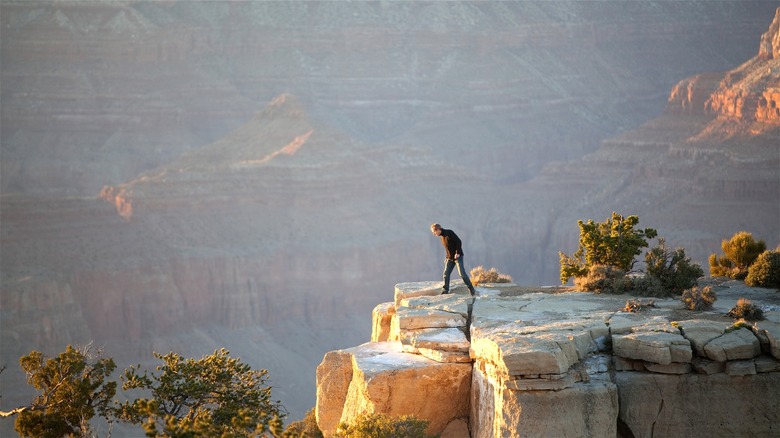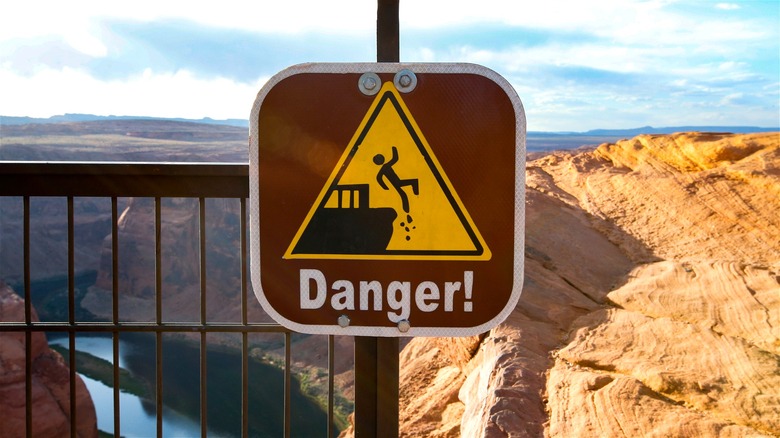The Iconic National Park With The Highest Number Of Deaths In America
For all the problems that exist in American life and governance, the vast majority of people across the country can agree that the National Park Service, established in 1916, is among the union's very best creations. Today, there are 63 National Parks across the United States, and together they attract tens of millions of visitors annually.
The best national parks in America, like Yellowstone, Denali, and the Great Smoky Mountains, remind visitors that the United States is blessed with scenery more diverse and spectacular than arguably any other nation on Earth. These are often rugged and wild places where Park Service infrastructure only goes so far, presenting beauty and danger in similar measures.
Sadly, hundreds of people die in national parks every year, intentionally and unintentionally. Deadliest of them all is the Grand Canyon National Park, which recorded almost 200 deaths from 2007 to March 2024. It's important to put this number in context — almost five million people visited the Grand Canyon in 2023. Still, the combination of immense drops, unforgiving terrain, and — morbidly — its beautiful grandeur cause the Grand Canyon to be one of the most dangerous parks in the world.
Sheer drops and harsh elements are a dangerous combination
There were 103 deaths recorded at the Grand Canyon National Park between 2014 and 2019. 49 of these deaths were determined to be "medical deaths," which refers to heart attacks, seizures, and other health conditions. A further 34 "unintentional deaths" occurred, including 14 falls, eight drownings, two motor vehicle crashes, two poisonings, and eight environmental deaths. Environmental deaths, incidentally, is an umbrella term that refers to everything from altitude exposure and avalanches to falling ice, falling trees/branches, flash floods, heat, cold, landslides, lightning, rock falls, and sunburn.
"Medical deaths" were most common in those over 65 years old, and no such deaths were recorded among visitors younger than 34. Deaths were more evenly spread in the "unintentional death" category, which highlighted the element of risk-taking that often leads to these deadly accidents. The South Rim offers some of the best hikes in the Grand Canyon, but it is also among the park's most lethal areas, with several deaths recorded in 2024 alone.
It's important to pay attention to posted warnings about dangerous areas
There are warnings posted at dangerous areas across the park, and it's vital that visitors take them seriously. Numerous signs warn against hiking from the rim to the Colorado River, for example, highlighting the distance, heat, and exertion involved in tackling the route's 5000-foot elevation change. Illustrations of exhausted, vomiting hikers leave little doubt of how difficult the hike is for prospective explorers.
The National Park Service also warns against venturing out on a number of dangerous overlooks. There is a sign on the Bright Angel Trail, for instance, that warns of a narrow, precarious ledge where anyone who attempts to traverse it is just one slip away from a lethal drop into the canyon below. Failure to heed such warnings can have devastating consequences. One of the park's more recent deaths occurred because a sign was not heeded when, on August 1, 2024, a 20-year-old student fell 400 feet to his death from Pipe Creek Overlook, near the South Rim entrance.


